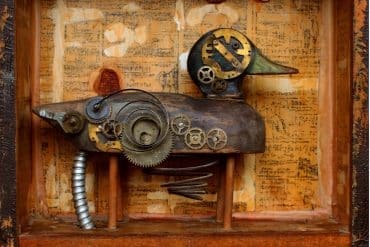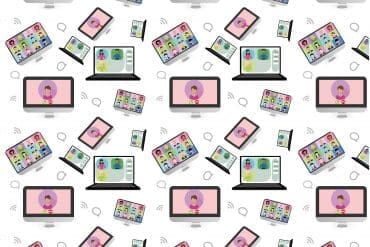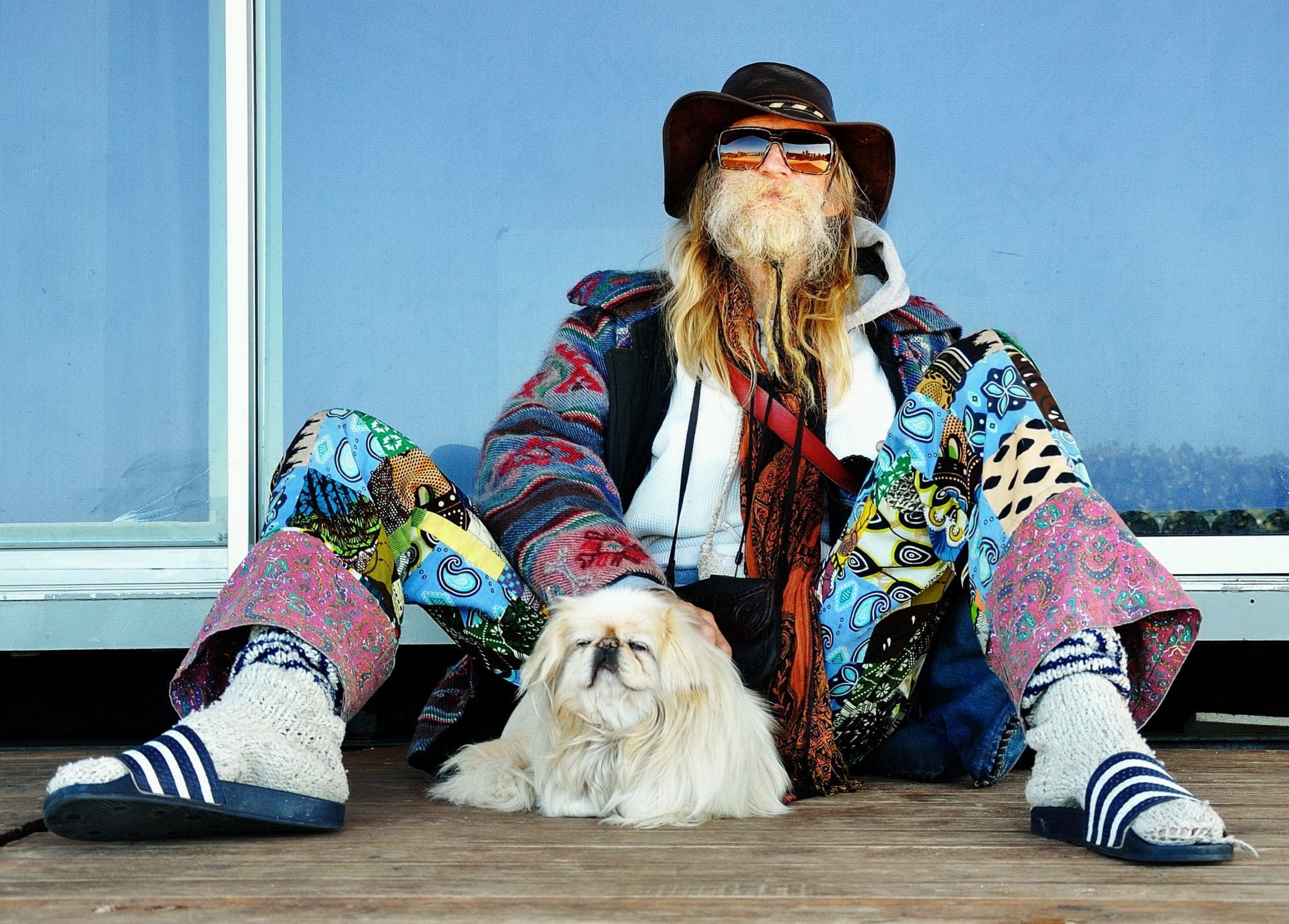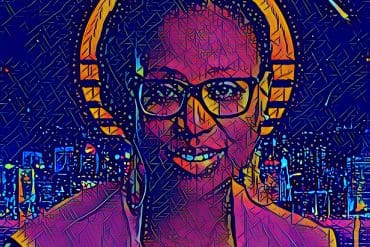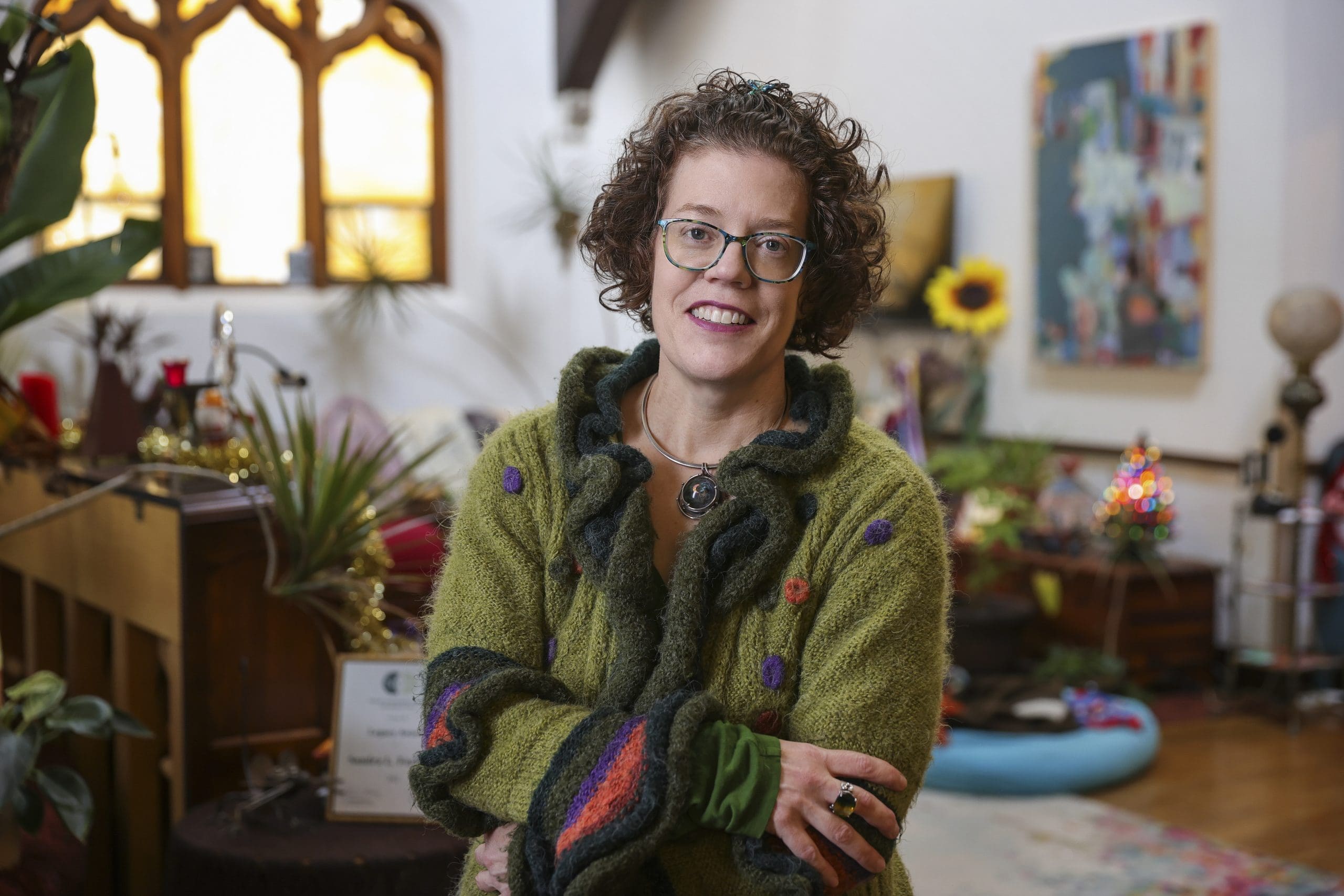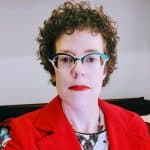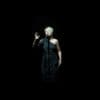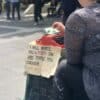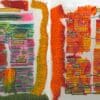Middle Age Blues
Sandra L. Faulkner
Good art can serve as a heuristic that stirs others to create. I find that when I am feeling blocked creatively or feeling a bit blah and uninspired, watching a gorgeous film, listening to some moody music, or reading literature that makes me want to slow down can spark an idea. And a new idea ignites my creative burner; I need to drop whatever I should be doing and go create. Patricia Leavy’s novel, Film Blue, was just the heuristic flint I needed this past May to write some poems.
I had not written poetry in quite some time and rediscovered how engaging with art is vital for my creative process and I have been a fan of Leavy’s writing for years, and I have not read anything that I don’t like. I admit, though, that Film Blue is my favorite of her novels to date. Probably because Leavy threaded this novel with themes about feminism, women helping women, the #MeToo movement, and pop culture, art, and creativity. As a feminist poet and (auto)ethnographer, I found the novel’s themes speak to what I want my work to do and be.
Good art can serve as a heuristic that stirs others to create.
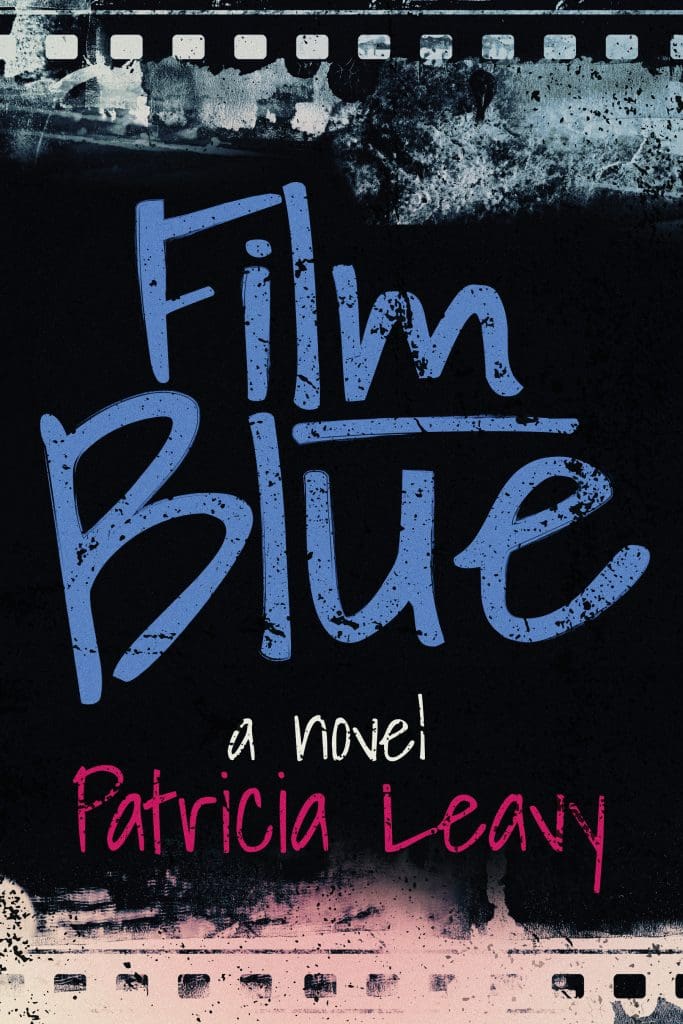
In Film Blue (Leavy, 2023), we meet Tash Daniels who is a few years out of college. She has put her love of filmmaking on hold while she works retail, club-hops, and scrapes by to pay the rent. Usually attracted to the wrong guy, she’s at a loss when she finally falls for the right one. Sexy deejay Aidan is living his life authentically as an artist and encourages her to do the same. Tash’s friends are along for the journey: Jason Woo, lighthearted model on the rise; Penelope Waters, earnest graduate student with a secret no one suspects; Lu K, fiercely independent hot-girl deejay; and Monroe Preston, the glamorous wife of a Hollywood studio head. In the novel, we get to follow Tash and her friends as they confront their fears and learn how to live in the present and pursue their passions.
What was it that inspired me and continues to inspire me about this novel? It could be the feminist characters who help one another achieve their goals and it could be the identity negotiation of characters in their mid-to-late 20s that reminds me of my own struggles at that age trying to figure out who I should be. It could be that I was a teen in the 1980s, so the pop culture referenced from that time is a nostalgia trip for me and it surely is the way the characters engage with art that keeps me coming back to the novel’s message: We are possibilities.
And a new idea ignites my creative burner; I need to drop whatever I should be doing and go create.
As someone who is solidly middle aged and winging my way through how I can be who I want and need to be outside of culturally stifling messages about middle aged woman, the idea that there are still possibilities is exhilarating. This novel is a feminist fist bump and a gorgeous visual of what women helping women and being your own muse looks like on the big screen of our lives.
In the novel’s appendix, Leavy invites readers to respond artistically to Film Blue. This invitation is the focus of the current piece; I share three poems that I wrote in response to reading and experiencing Film Blue. These poems are what we could call ekphrastic poetry—poems written about works of art. I participated in an online workshop on ekphrastic poetry in May 2023 and found myself thinking about Film Blue. It served as a kind of meta-ekphrastic inspiration. The novel shows us how art can be and should be a part of everyday life; characters are immersed in film making, music, and visual art.
I admit, though, that Film Blue is my favorite of her novels to date. Probably because Leavy threaded this novel with themes about feminism, women helping women, the #MeToo movement, and pop culture, art, and creativity.
We witness how Aidan, a DJ and musician, mixes music as a soundtrack for walking around New York City and we see the aesthetic pleasure Tash, a filmmaker and the main character, experiences from the art films in the MoMA and her creative vision for her own film making. We observe how spending time contemplating Andy Warhol’s painting of Marilyn Monroe provides Monroe, a former model and wife of a famous movie producer, insight into the human condition. This focus on art inspired me when writing ekphrastic poems.
I need to give you some background about me and the creative impetus for the first poem before I share it. A confession: I have always been an overachiever afflicted with the need to push myself into storms of my own making filled with clouds of anxiety, work, and flashes of hedonism. An important piece of information: I had no intention of getting married when I was young. My journals from my teens and 20s do have writing about attraction and sex and relationships but little to nothing about marriage as a destination or desirable option. In one entry when I was 19, I wrote that maybe in 9 years I would think about getting married and that “I’m attracted to the type who doesn’t want a life like that—maybe I don’t either” (i.e. marriage).
As a feminist poet and (auto)ethnographer, I found the novel’s themes speak to what I want my work to do and be.
When I teach a unit on marriage in my undergraduate courses, we spend time talking about the meaning of marriage and love and the role that culture and expectations plays in our understandings. Most students, gay and straight, have elaborate plans for their weddings (Faulkner, 2023b). I never pictured a (dream) wedding, because marriage meant making yourself smaller to fit into the category WIFE. I also came out as bisexual in my late 20s when marrying a woman was not an option.
One of the storylines in Film Blue focuses on being bold enough to take a chance on love, putting aside what we think it is and who we think we are in relation to it and being vulnerable as the way to experience love. Tash, and her friend Lu, both meet love interests who get them, and support them and their art. Tash is a film maker and Lu is a DJ. Both characters learn that love is about being able to show an authentic self to someone. My mother asked me many times in college if there were no decent men to date, because I never brought anyone home (men or women). I would reply no and tell her that I was not getting married.
Even though she wanted me to get married, I think she was relieved that I did not marry the people I had serious relationships with in my 20s and early 30s as we were not well suited for anything long term. I have written about my decision to get married at 33, because I was able to rewrite the meaning of marriage as partnership with an authentic and vulnerable love.
What was it that inspired me and continues to inspire me about this novel? It could be the feminist characters who help one another achieve their goals and it could be the identity negotiation of characters in their mid-to-late 20s that reminds me of my own struggles at that age trying to figure out who I should be.
Another important piece of information: In college, I almost changed my major from interpersonal communication to art history sophomore year, because I was enamored with modern art after taking a survey course on art from the Renaissance to Modern. (If you are overwhelmed thinking about that time span, imagine how it was to memorize art piece after art piece with the artist, date, title, and location. My professor was appalled that one of my classmates and I cut out photos of the art from our textbook and pasted them on notecards to study for her impossible exams. (Remember that this was a time before googling images!). I spent free time in museums and studied modern art starting with Paul Cézanne learning what I admired from movements such as Cubism, Dadaism, De Stijl, Expressionism, Fauvism, Impressionism, and Surrealism.
I tacked up postcards with works by artists like Marc Chagall, Paul Klee, Egon Schiele, Marcel Duchamp, Max Ernst, Henri Matisse, Gustav Klimt, Man Ray, Judy Chicago, and Vincent Van Gogh on the borders of my bedroom so that I could literally sleep with art. (Yes, I recognize how penis-centric this list is. I learned to read feminist art critics and embrace the Guerilla Girls’ mission in graduate school). I spent an afternoon in Munich when I was 19 and backpacking through Europe at a Chagall exhibition, because I loved his bold use of color. Now, I have a mug with the image of Chagall’s painting, The Birthday, on the front that I use about once a week depending on the dishwasher rotation.
It could be that I was a teen in the 1980s, so the pop culture referenced from that time is a nostalgia trip for me and it surely is the way the characters engage with art that keeps me coming back to the novel’s message: We are possibilities.
In the workshop, when the assignment to write an ekphrastic poem arose, I chose the Chagall from my coffee mug. The Birthday is about Chagall’s first love whom he marries shortly after painting this piece; the canvas is all about depicting the power of love. Another thing to know is that I find writing love poems that are not cliché an impossible task. I much prefer to write poems full of melancholy and rage like this is another blue period in my artistic life. And oh, how I tried to avoid writing a love poem, but there’s no way to not write about love in response to Chagall’s painting.
Why would I not want to write about love when my 18th wedding anniversary is August 1st? I remember the way new love claws at your insides, the way that everything is brighter and tastes like the first bite you have ever eaten. However, I also know the feeling of love over time, how love can scaffold the dark and unsexy times, how it evolves in unexpected ways, and the importance of (re)committing daily to taking a chance.
As someone who is solidly middle aged and winging my way through how I can be who I want and need to be outside of culturally stifling messages about middle aged woman, the idea that there are still possibilities is exhilarating.
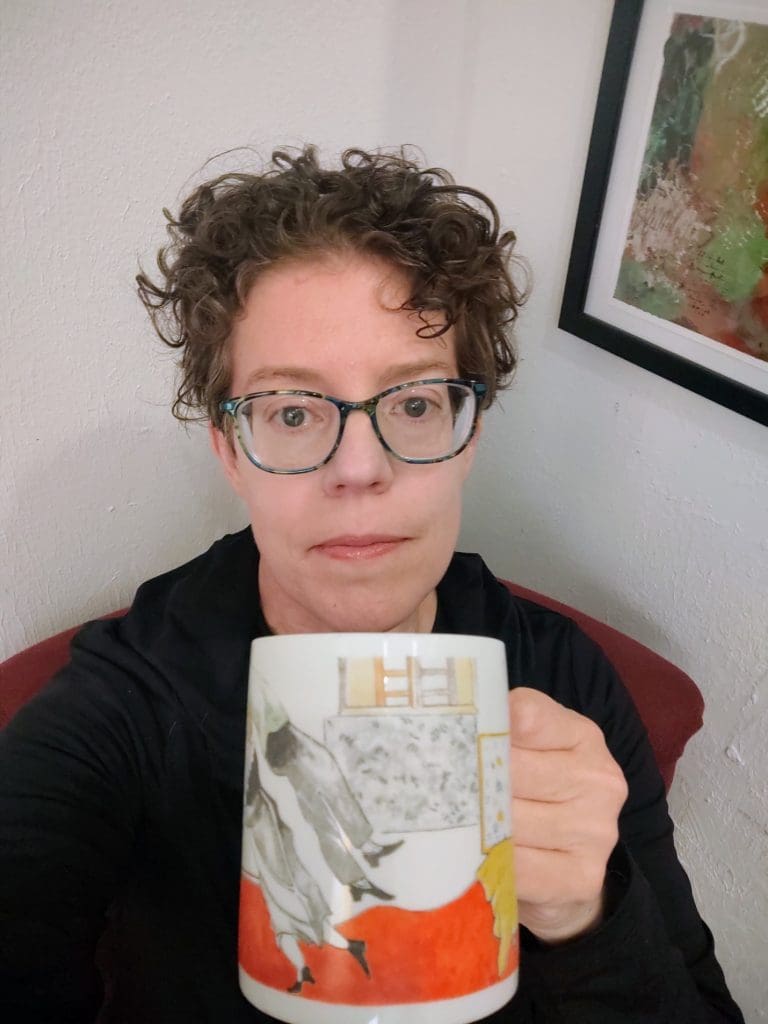
After studying Chagall’s painting The Birthday, the Overachiever decides to write a stinking love poem*
to best Chagall and the clichéd new love painted
bold black forest green blinding beige and red orange
the hues so bright the sun pales his weightless body
accents how he’s the first to discover the feel of love
eating the heart from the inside insatiable breath
every move colored by the texture of a lace collar
shoes with no tread marks passion like a small animal
clawing
smitten he floats disembodied and grotesque
his neck swiveled 270 degrees like a Tawny owl
touching beak to lips his love’s fish-eye opens wide
projecting the hemisphere of love on the bourgeoisie rug
hung on the wall to keep cold away from the bed
he hoots about the birthday flowers and raspberries
picked in the morning clouds to crown the curd cake
their too busy to eat hunger for food irrelevant and
disgusting
the overachiever smears their canvas with better metaphors
for a passion almost two decades old love that grew heavy
to meet the earth and roll in understanding and obligations
frenzied movement and surprise morphed into habitual consideration
the business of established eros gradations of black and white
the value of seeing a kaleidoscope with mostly rose quartz crystals
the kind of love that can tromp in a field full of ticks
and pull them off one by one waiting for the winter freeze
This novel is a feminist fist bump and a gorgeous visual of what women helping women and being your own muse looks like on the big screen of our lives.
In the workshop, we spent a session writing a poem based on the Tarot card, the Fool. In a deck of cards, this one is numbered zero, so there is no place in the sequence; one must be a Fool before they can become a sage. The image of the Fool is a young man standing on the edge of a cliff holding a white rose representing purity and innocence, a knapsack containing all his needs thrown over one shoulder, and a loyal white dog at his feet. He seems unaware that he is about to fall off the cliff as he is carefree and not aware of the mountains in the background that symbolize the challenges ahead.
The second poem I share is about a time when I embraced being the Fool. When I was 19, I studied abroad in England for a semester and then took a month-long backpack trip with a Eurorail pass. I traveled alone for some time because the friend who was to travel with me drank all her money. A confession: though I am hedonistic, I also have a practical side. I figured out how much money I could spend a week and still have enough left to travel for month after the semester ended. I’m not exaggerating when I say that this experience of being the Fool was a pivotal one in my life.
In the novel’s appendix, Leavy invites readers to respond artistically to Film Blue. This invitation is the focus of the current piece; I share three poems that I wrote in response to reading and experiencing Film Blue.
Tash, the main character in Film Blue, has a conversation about the movie, Desperately Seeking Susan, with her best friend, Jason. Their discussion about identity and purpose in one’s 20s resonated with me and spoke to the importance of being the Fool.
*
“The movie is really about her trying to figure out who she is, not who people say she is or who she thinks she’s supposed to be. It got me thinking that there’s this time in your twenties, you know after college or whatever, but before whatever is supposed to happen actually happens.”
“Before you figure your shit out,” she said.
“Before you figure out who you are and what you’re doing. Nobody tells you what the hell to do after school. It just feels like being suspended in air or something.”
“Totally.”
“I think it’s like a period of time you have to struggle through to get to where you want to go.”
Tash smiled.
“What?” Jason asked.
“It’s like our Blue Period. Your friend doesn’t have to off themselves. We kill off parts of ourselves; we have to. It’s not really about grief or sadness, just being sort of lost,” she mused.
“But lost on the way to somewhere. Don’t forget that. If we say goodbye to some version of who we are, it’s only to become a better version.” (p. 119)
*
My 20s were also a blue period for me. Rereading journals from that time has been surprising, because I remember being more together and secure in my sense of self. But what I read is how confusing relationships were of all ilk and how I was searching for ways to be someone I wanted in relation to others without (despite?) the expectations and cultural pressure.
Did I somehow get my shit together in my 30s? I bought a house as a single woman at 31, got married at 33, endured a toxic workplace for 4 years and moved to a new job at 35, sold the house and bought a new home with a husband, got a joint checking account, and had a child at 37. I suppose so, though since I believe that identity is a verb and not a noun, the reality is that “getting your shit together” is a lifelong processand I can pinpoint shifts in my 40s figuring out what it meant to be an ambivalent mother, how to parent with my partner, how to keep going when parenting and health challenges knock you down, and how to enact the vision of what I wanted my professional life to be.
And here at the beginning of my 50s, there are still insecurities and questions about the self in relation to others and the struggle to love the self with the concomitant limitations that increase every year. A confession: I do not enjoy being middle aged, despite my feminist yearning to celebrate turning into the Crone. However, I can still draw the Fool out of the deck and reframe limitations into possibilities.
After being asked when they were the Tarot Card Fool, the Overachiever pinpoints the time and place
It’s 1991 they are on a train somewhere in Europe full of 19-year-old bravado
the kind that only Jungian fools possess going anywhere but
back to the person they were back in the States back in high school
back before they declared they wanted to be in love with the (im)possible
a new (wo)man at every train stop the curve of a chin a flank muscle in motion
voices from their future dreams any accent that was unamerican
the faintest brushstrokes on canvas all the art
their backpack crammed with a few pairs of dirty socks and underwear and cut-offs
dental floss and toothpaste packs of the sugarless gum they obsessively chomped
(because dental hygiene was one parental lesson that stuck)
a train schedule on newsprint full of cities they had only read about
a blank journal to make lists of things worth breathing for
bread and chocolate and hot fries with mayonnaise Peter Murphy’s voice
warm strawberries in a paper cone outside the Alte Pinakothek hard beds
exquisiteness that made their eyes burn
and lines of earnest poetry ways to stop being nice to sad puppy-like men
who followed them arguing about whether men and women can be friends
if a relationship needs sex if women can walk alone if American women are easy
if sleeping with a friend’s beau counts as cheating a continent away
until they learned being dirty was defense falling in love should only last 15 minutes
before moving on to the next beautiful item
reeking of sweat and adolescent angst they made a list of things to do:
Get a tattoo (check)
Have an affair with a foreign man (check)
Drink cappuccino in Vienna (check)
Go to Germany (check)
Go to Budapest (check)
Attend a peace rally and fall in lust with beautiful men (check)
Get over the provincial Roman Catholic Frat Boy (partial check)
Become a Dadaist (as if)
Stir things up when back in the States (ongoing)
making lists and walking until blisters formed on top of blisters
trying to pause the moment when the ephemera mutated
into the ugly and ordinary like something they’d seen before
and what they were writing themselves out of being
These poems are what we could call ekphrastic poetry—poems written about works of art. I participated in an online workshop on ekphrastic poetry in May 2023 and found myself thinking about Film Blue.
The final poem I share is an example of pareidolia—seeing figures and shapes in random places. For example, seeing Jesus in a piece of toast or a water buffalo in a cloud. It is our brains way of making sense of un-patterned things. In the workshop, we were given an exercise to find or create a random pattern and then describe what we saw. We could step outside and snap a photo of the clouds, for instance. I decided to create a pattern with something I could find in my home office. After searching, I found a blank postcard and some alcohol inks and chose my favorite colors, orange and purple. I layered the colors on the card and studied it when I was finished. I saw the torso of a womxn with her back facing me and nubs on the upper back where wings should be.
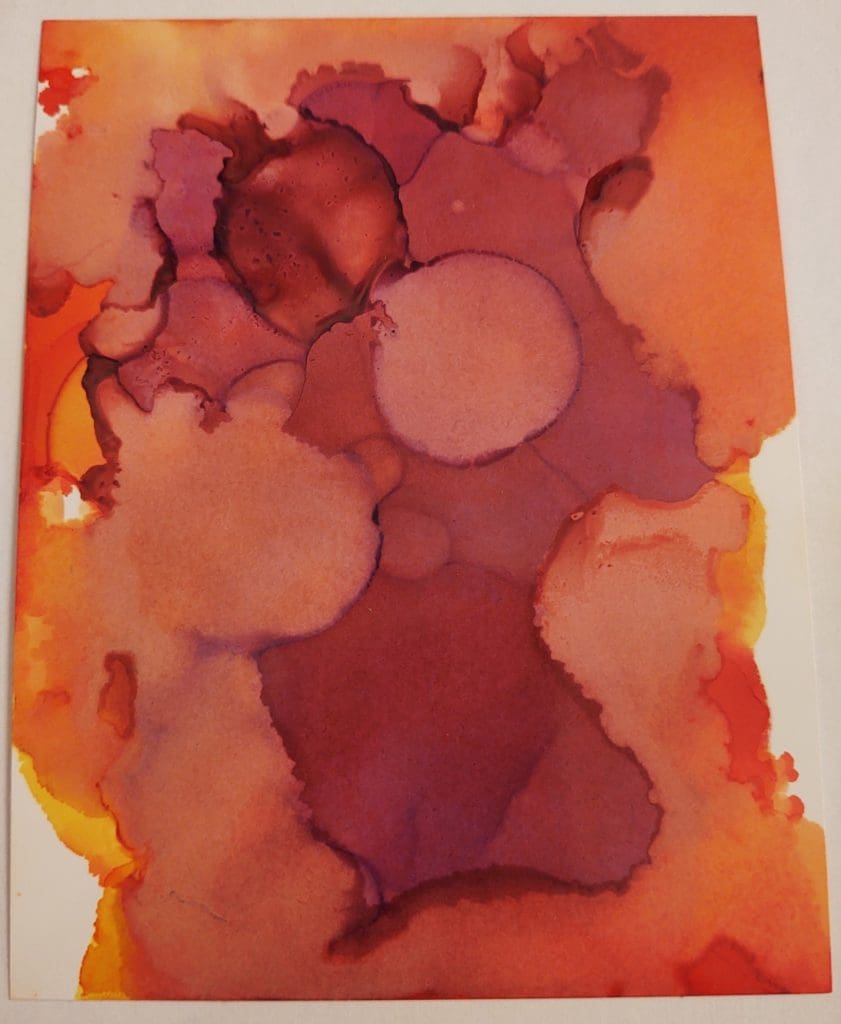
We then reflected on our current state of affairs and what the image tells us about that. I wrote a response to the alcohol ink I titled, Winged Womxn:
I am thinking about middle age and how women become invisible and how the current political situation is cutting off my wings and the wings of other womxn. It is like our Pegasus wings have been filed down to nubs. Disability by design with laws that restrict bodily autonomy. Maybe what I see in this piece is the growth of horns that will rise out of her back to be used as weapons. This is witchy power. And just when womxn get some power, the patriarchy comes along and slashes and burns. Or maybe these are nubs that every womxn is born with and the task at middle age is to believe in your power and to stop caring what it means to be middle age. Stop being invisible and decide to be loud and colorful.
What I saw in Winged Womxn was akin to Film Blue’s theme, we are possibilities. The meaning and experience of the colors added to my reading of the image. Orange symbolizes energy, flamboyance, enthusiasm, and creativity, while purple symbolizes spirituality, royalty, wisdom, and mystery. So, rather than seeing middle age as limiting and fixed and what others tell us it is, we can burn off the cataracts and see something fresh. We can turn melancholy into a state of creativity. And perhaps instead of middle age being a blue period, it can be orange and purple, a kaleidoscope of rage and joy, all about the possibilities we take a chance to see.
At midnight, the Overachiever rips off their clothes at the height of a cold snap
because their hot (not that anyone notices) an orange aura bleeding out
from their torso (a flood of corporal fluids) like a bittersweet striptease
for middle age (sweating a purple film) their bared back shows
the scars from work (sheets that strangle) the filing away of self
to fit some catalogue (invisible as black ice) of fading women maybe
these are the nubs of wings (the anger teeming) sprouting from their rhomboids
the horns of Ammon (skin dry as milk ducts) like the backpack of youth
chafes their skin violet (those extra ten pounds) they must heft with abandon
About the Author
Sandra L. Faulkner is Professor of Media and Communication at Bowling Green State University where she writes, teaches, and researches about close relationships. Faulkner’s interests include qualitative methodology, poetic inquiry, inclusive pedagogy, and critical perspectives on interpersonal and family communication. She often uses poetry, creative nonfiction, and autoethnography to explore her own negotiation of identity as a parent, partner, and professor. Her research focuses on how individuals navigate gender and sexuality through interpersonal communication and personal narrative and the use of arts-based research as inclusive and critical pedagogy.
Her book, Poetic Inquiry: Craft, Method, & Practice (Routledge), won an Honorable Mention for the 2021 ICQI Book Award. She received the 2013 Knower Outstanding Article Award from the National Communication Association, the 2016 Norman K. Denzin Qualitative Research Award, the 2020 Trujillo and Goodall “It’s a Way of Life Award” in Narrative Ethnography, and the 2022 Legacy Award from the National Communication Association Ethnography Division. Find Faulkner online at https://www.sandrafaulkner.online/ and https://bgsu.academia.edu/SandraFaulkner
For Further Reading
Faulkner, S. L. (2023a). The Value of Celebrating Poetic Voice in Middle Age. The
AutoEthnographer, April 30, 2023. https://theautoethnographer.com/the-value-of-celebratingpoetic-voice-in-middle-age/?fbclid=IwAR1d85A-mXwpO2zGsOmeefacWDRxdp61vOOkgpTE9OluvgTzh_-dOcOioHE
Faulkner, S. L. (2023b). For Better or Worse: A critical look at marriage in Laurel Richardson’s
poetry. International Review of Qualitative Research.
https://doi.org/10.1177/19408447231169065
Faulkner, S. L. (2018). Crank up the feminism: Poetic inquiry as feminist Methodology.
Humanities, 7(3), 85. https://doi.org/10.3390/h7030085
Faulkner, S. L. (2016). TEN: (The promise of arts-based, ethnographic, and narrative research
in critical family communication research and praxis). Journal of Family Communication, 16(1),
9-15. https://doi.org/10.1080/1526
Faulkner, S. L. (2012). That Baby will Cost You: An intended ambivalent pregnancy. Qualitative
Inquiry, 18(4), 333-340. https://doi.org/10.1177/1077800411431564
Leavy, P. (2023). Film blue. Kennebunk, ME: Paper Stars Press.
Notes:
After studying Chagall’s painting The Birthday, the Overachiever decides to write a stinking love
poem is published in Ekphrastic Review (October 27, 2023).
Credits
Featured Image by Patricia Leavy
Learn More
New to autoethnography? Visit What Is Autoethnography? How Can I Learn More? to learn about autoethnographic writing and expressive arts. Interested in contributing? Then, view our editorial board’s What Do Editors Look for When Reviewing Evocative Autoethnographic Work?. Accordingly, check out our Submissions page. View Our Team in order to learn about our editorial board. Please see our Work with Us page to learn about volunteering at The AutoEthnographer. Visit Scholarships to learn about our annual student scholarship competition.
Sandra L. Faulkner is professor of communication at Bowling Green State University where she writes, teaches and researches about close relationships. Her interests include qualitative methodology, poetic inquiry, and the relationships among culture, identities, and sexualities in close relationships. Her research focuses on how individuals navigate gender and sexuality through interpersonal communication and personal narrative. She often uses poetry, creative nonfiction, and autoethnography to explore her own negotiation of identity as a parent, partner, and professor. She received the 2013 Knower Outstanding Article Award from the National Communication Association, the 2016 Norman K. Denzin Qualitative Research Award, and the 2020 Trujillo and Goodall “It’s a Way of Life Award” in Narrative Ethnography. https://www.sandrafaulkner.online/ and https://bgsu.academia.edu/SandraFaulkner


